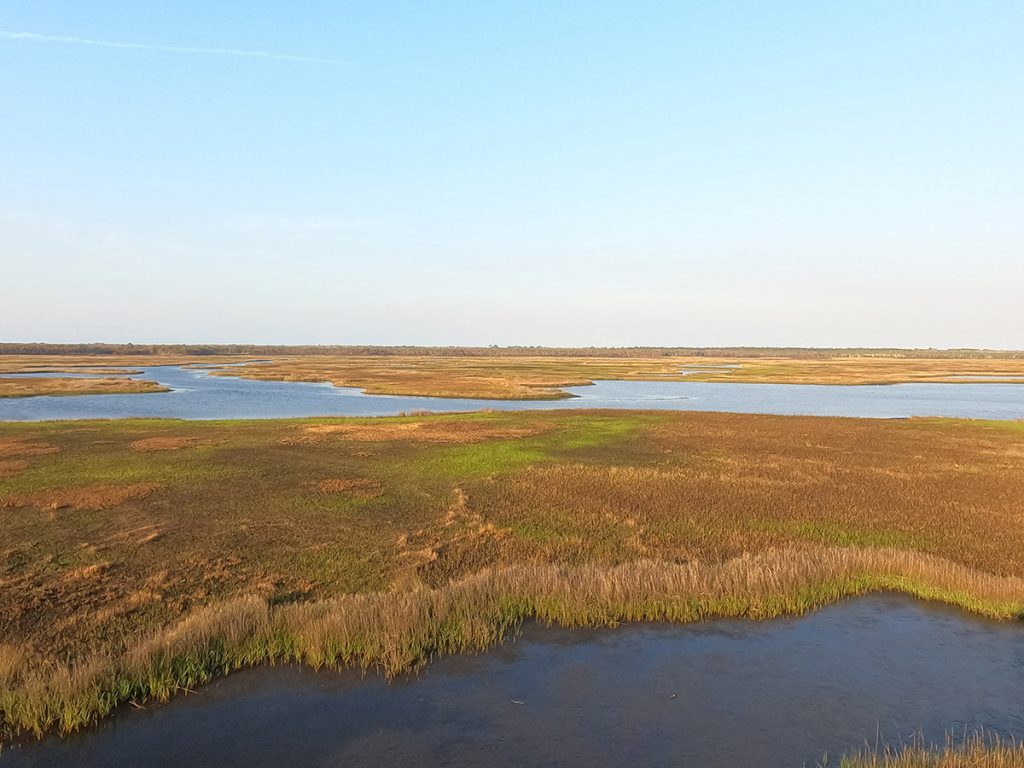They call it needlerush for a reason. Years ago, when this blog was focused on salt marshes and oyster reefs, we would walk around these clumps of tall, stiff spikes. Today, in our search for black and yellow rails, we have no choice but to walk straight though them.
If a bird doesn’t want to be found, this is a good place to live.
“Black rails are the most secretive bird in North America,” says Heather Levy. “Yellow rails are the second most secretive bird in North America.” Little is known about either bird. They don’t leave the safety of their tall bunch grasses and rushes during the day, and they’re small and shy.
The high marsh is a habitat built to hide such an animal. But it’s an ecosystem in decline; NASA estimates that, globally, we lose an average of two soccer fields of marsh land an hour. As a result, black rails have disappeared from a lot of their range.
Heather is with the Stoddard Bird Lab at Tall Timbers Research Station. Tall Timbers is out here as part of a Gulf-wide effort to study black and yellow rails: NOAA’s Project Firebird. It may seem an odd nickname for animals that live in a wet place, but rails are as dependent on fire as bobwhite quail or red cockaded woodpeckers in a longleaf pine savannah.
Like those other birds, they’re affected by lack of prescribed fire as well as habitat loss. Unlike those birds (mostly), rails also have to contend directly with sea level rise. Black and yellow rails are birds in need of protection. But first, researchers must understand what it is they need to survive.
Searching for black and yellow rails in the winter
Starting in March, rails start to vocalize regularly. By then, yellow rails will have set off to their breeding grounds in Canada and the northernmost states. A certain percentage of black rails will move slightly to the north, while others might move in from the Caribbean.
In the spring and summer, Tall Timbers can find black rails using what they call broadcast surveys. They play a recording of a black rail, and see how many respond.
In the winter, both rail species are mostly quiet, and have to be flushed out (we shot this segment in February of 2023). And as a nocturnal animal, they have to be flushed out at night. We’ll see what that’s like in a moment. The big difference between winter and spring surveys is that in winter, they’ll have birds in hand. They can band the birds, measure them, and take feather and fecal samples. The DNA from the samples can help them figure out which rails are here year round, and what they eat.
Heather describes the birds we hope to find on our survey.
“Black rails are really small,” she says. “They’re about 30 grams. They’re very dark except for a chestnut nape patch and the back of their their back and their wings have these white speckles on them that looks kind of like a constellation. In addition to that, they have these bright red eyes.”
Yellow rails are a little larger and mostly yellow. They have have a dark speckled patch on their head that runs down their backs, and white bellies.
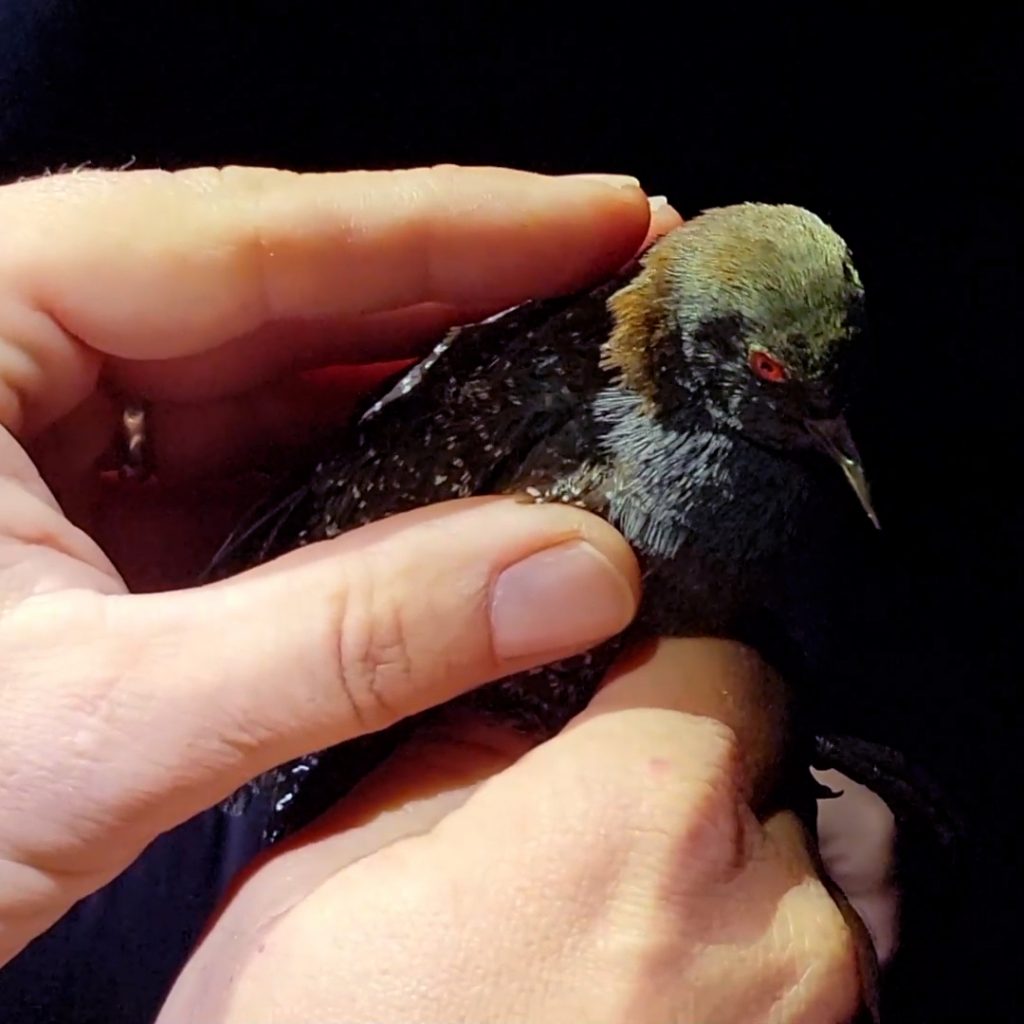
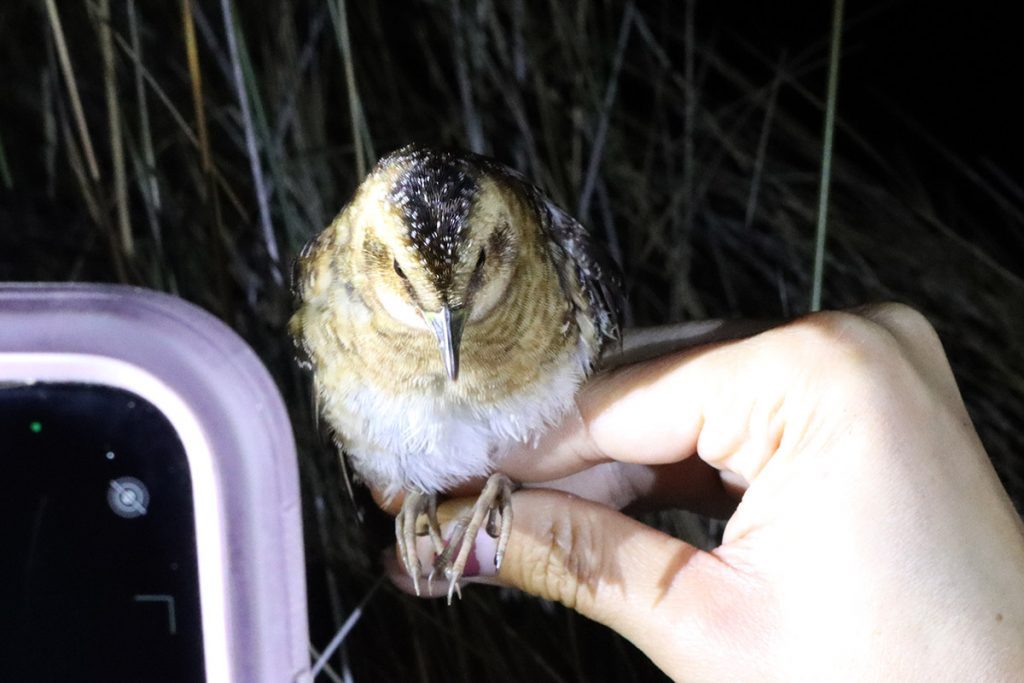
Now that we know a little about the birds, let’s get to know the place they call home.
Welcome to the high marsh
If you look out from an observation tower on the St. Marks National Wildlife Refuge, you see grass. Grass near, and grass far— grass as far as the eye can see.
“We’re really, really lucky in the panhandle here that we have a really undeveloped coastline,” Heather says, “meaning we have thousands and thousands of acres of really nice salt marsh habitat. And that is great for black rails and yellow rails.”
At ground level, many of us would have trouble differentiating species of grass, though needlerush is fairly distinct. Walking through the marsh muck, you’d notice wildflowers and other small plants tucked between the tall grasses. It’s not unlike a longleaf savannah or a prairie.
“If you think of a prairie ecosystem, you know, in the central United States, it’s very diverse in different grasses and herbs,” says Heather. “And that’s really what we see here. So there’s a lot of bunch grass, but there’s also a lot of different species of rushes and flowers that are in here.”
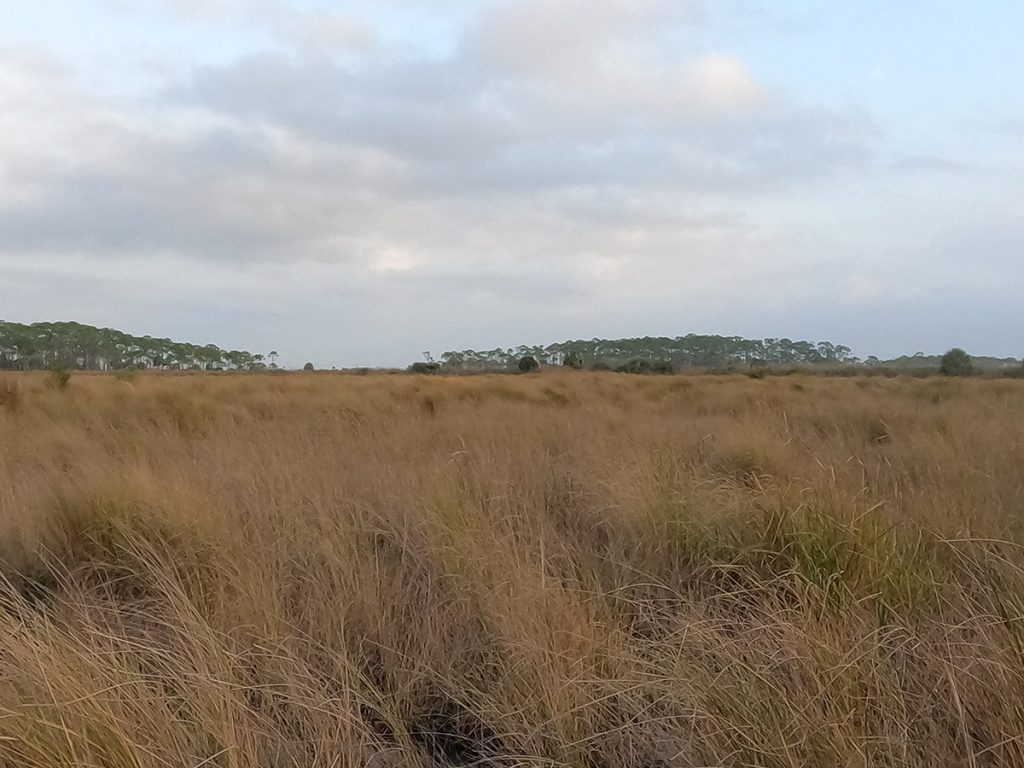
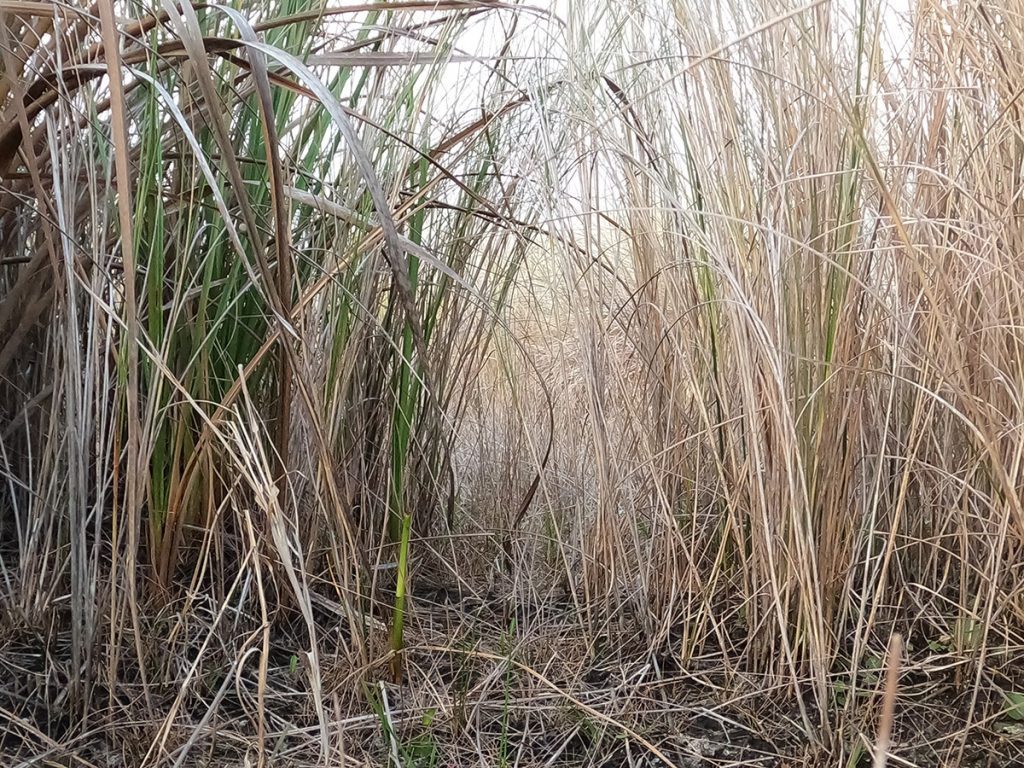
As you walk away from the shore, the species of grass change. Saltmarsh cordgrass (Spartina alterniflora) gives way to slightly less salt tolerant species such as Spartina patens and Spartina bakeri. Like grasses in the longleaf pine ecosystem, marsh grasses grow in bunches. From above, it may seem like a continuous mat, like a turfgrass lawn. On the ground, however, there is some space between the bunches. These spaces form small tunnels where rails stay out of sight.
High and dry
The two study species like to say hidden, and they like to stay relatively dry.
Tides don’t reach into the high marsh on a daily basis. When they do flow in, an area just a few centimeters deep can trap water in puddles where rails can search for food.
“They’re really small birds,” says Heather, standing by one such pool. “They’re not very good swimmers. And so this is an example of a couple of centimeters of water that would create good foraging habitat, but surrounded kind of by this higher and drier area.”
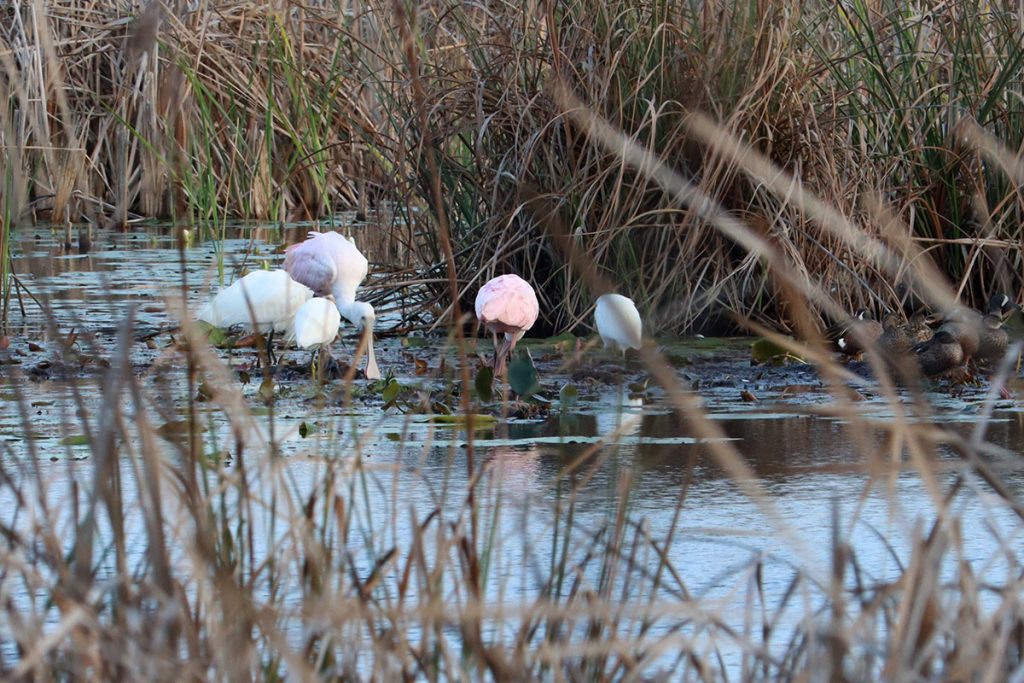
Deeper areas can hold larger pools of water. Here we find wading birds, shorebirds, and even ducks. The high marsh is a patchwork of channels and pools, open sand flats, and grass. It’s a mix of wet, dry, and mucky areas, enclosed and open areas, and the edges between them.
It’s also a mix of places where fire will spread, and where fire won’t reach.
“Typically the low lying wet areas do not burn as well. And the birds have time to crawl their way out and fly to adjacent marshes.”
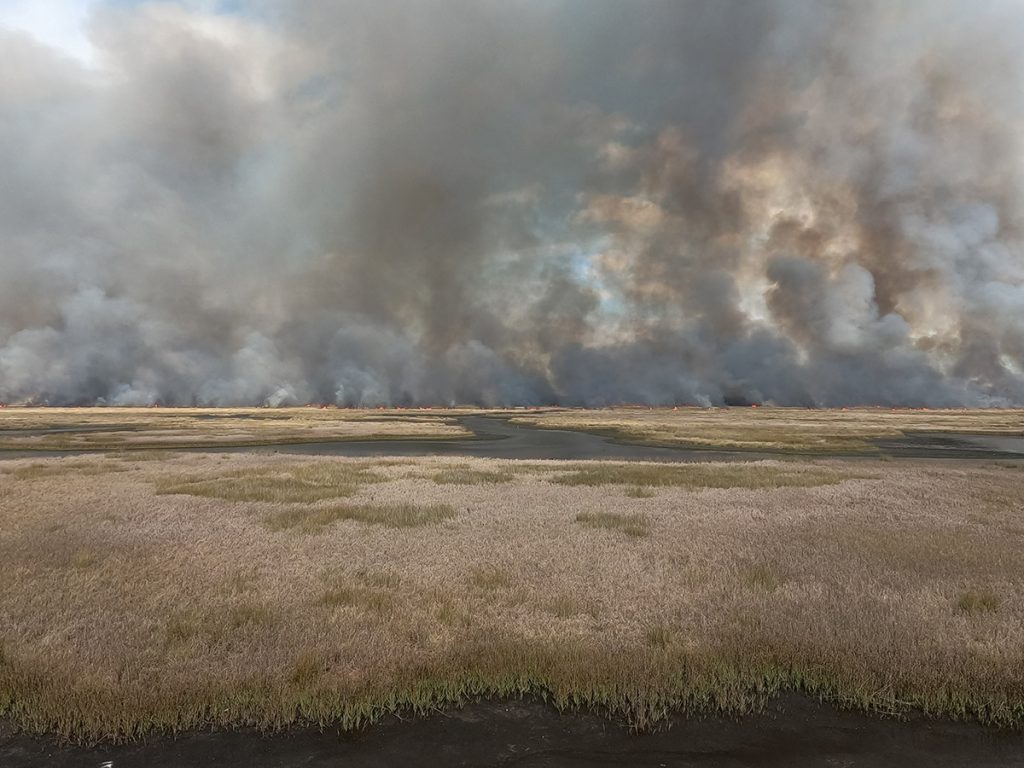
Fire in the Marsh
I witnessed this firsthand two weeks before I tagged along on my first rail survey. Sitting in an observation tower in Florida’s Big Bend region, I watched as a helicopter flew in a pattern similar to how you’d mow a lawn. Starting by the tree line, it would fly row after row, back and forth, working its way towards me. The closer it got, the better I could see white pellets fall from it into the marsh. Moments later, grass would ignite, and fire spread.
Large flocks of white birds would erupt from grasses as fire approached their location. Ducks and wading birds in shallow pools could afford to show more patience; but even if they weren’t in danger of becoming engulfed in flames, their area would soon heat up. Roused from its sleep, a raccoon trotted across a mud flat to safety.
As with a longleaf burn, land managers apply prescribed fire here in blocks. This mimics the patchiness of natural fire, and allows animals to move into nearby, unburned habitat.
When I returned two weeks later, the earth was covered in green stubble. Grass was growing fast, but not yet ready to hide rails.
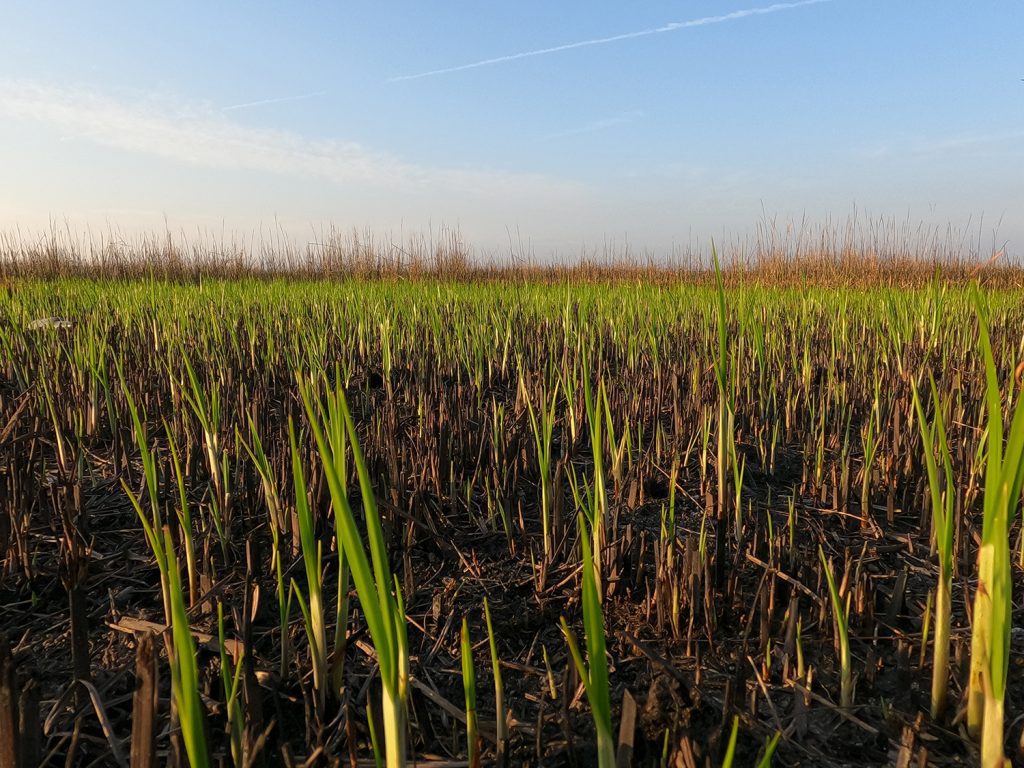
Rail survey site two- higher grass diversity, more shrubs
We had already made the trip down, so we took a walk towards patches fire skipped. Heather and her team could quickly see that we’d find no rails that night.
We reconvene a week later, in a marsh a little to the west (I’ve been asked not to share specific locations). This site has been a productive place to find black rails, where at the first site they’d found mostly yellow. Heather also notes that where the last site was dominated by Spartina patens, tonight’s site is more diverse.
It also has far more woody shrubs, mainly wax myrtles. “So this this spot is definitely due for a burn,” Heather says, “which they should be doing this spring.” Like in a longleaf forest, prescribed fire keeps the high marsh from becoming overly woody. Animals here evolved with regular fire and a grassy landscape.
Tall Timbers keeps track of how often each of their survey plots is burned, looking at intervals of 2, 5, and 7+ years. They’re interested in the abundance of rails under each burn regime. Knowing this will help land managers plan prescribed burns at intervals that best suit rails and other marsh wildlife.
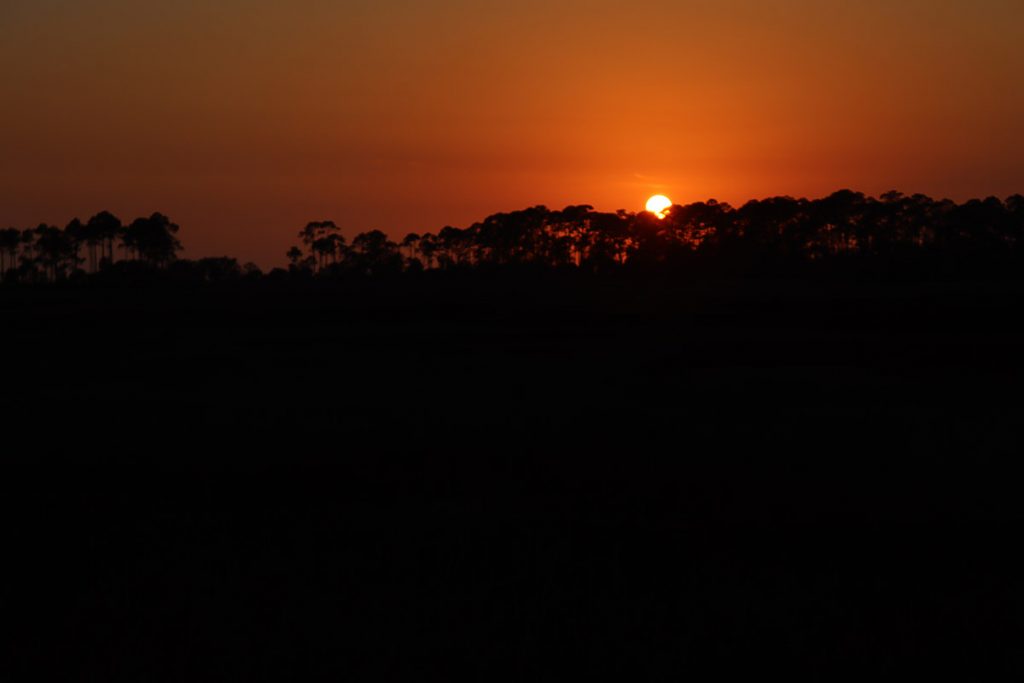
Dragging milk jugs through the marsh, at night
In the spring, Heather and her team will play black rail recordings and see who responds. In the winter, we’re going to crash through the marsh to see who runs out. And, again, we do this at night.
Much like the helicopter used to burn the marsh, we’re walking a lawn mower pattern through the marsh. Heather finds a GPS location and lines up her team. Over the course of the survey, Heather will correct their position, shifting them left or right, or rotating slightly. They want to be as precise as possible in repeatedly surveying the same patches of marsh.
To flush rails, they drag a 15 meter line through the grasses. Every few feet, they’ve attached a milk jug full of cat toys. The line physically drags on the grasses while the jugs make noise. Any bird hiding in the marsh will feel and hear danger approaching, and will run or fly from its shelter. Rails won’t immediately take flight, so they can be netted as they run to a new patch of grass.
We walk straight lines through that patchwork of the high marsh. That means wading through the occasional pool— unless it’s too deep, then we walk around. We walk through tall grasses and needlerush patches, and the surveyors lift the line over isolated shrubs. Sometimes we catch a break and cruise over a sand flat, while at other times we reach unburned islands of large shrubs and small trees. There, the team disperses, scanning the ground with their headlamps.
It’s an occasionally uncomfortable march, and monotonous when nothing scampers out. “There are lots of days of just zeros, of no data, where we don’t hear or see birds,” says Heather. “But then every time we do, it’s a really novel and unique observation.”
What do they find tonight?
A few different birds run or fly out. The team quickly assesses whether the shape that moves quickly away from them is like that of a rail, or maybe that of a sparrow. If someone is confident they’ve spotted what might be a rail, the team puts down the line and circles around the potential target with nets.
About twenty minutes in, they have their first catch. Jim Cox, head of the Stoddard Lab, nets it and immediately identifies it as a Virginia rail. It’s a little larger than the target species, but almost as secretive. Any bird watcher visiting the preserved lands on our coast would be delighted to see either of the three birds.
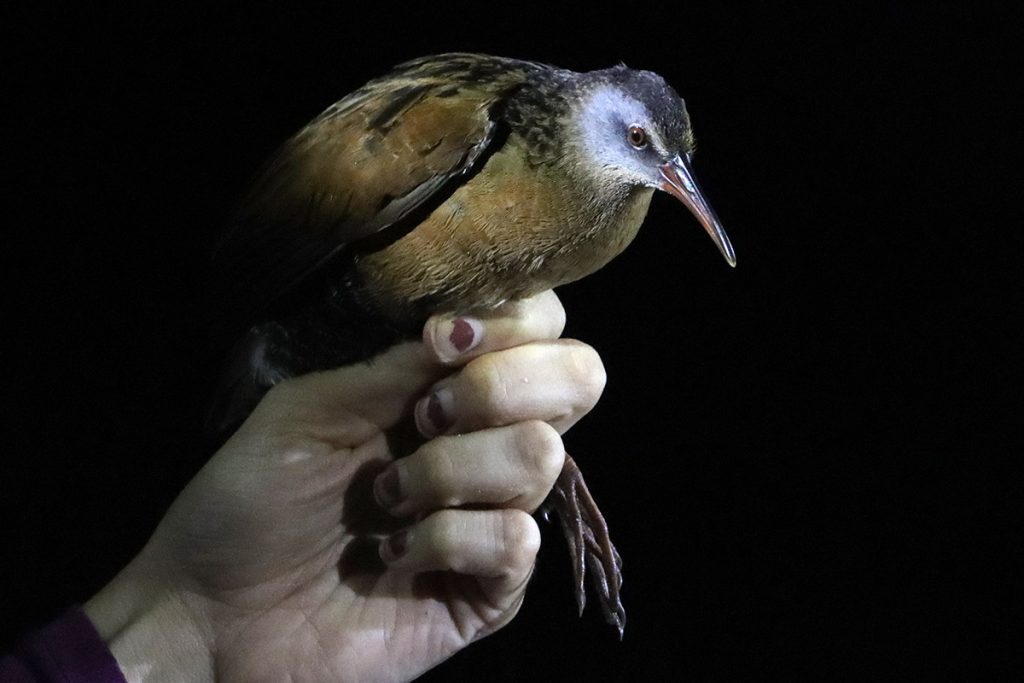
Virginia rails are winter visitors. Jim and Heather decide to measure and photograph it, and then send it on its way.
It’s an exciting start, but it’s a while before we see anything else. When Jim finally does drop his net on another bird, Heather runs up to take hold of it and is surprised. In a survey location where they’ve only ever found black rails, here is a yellow rail.
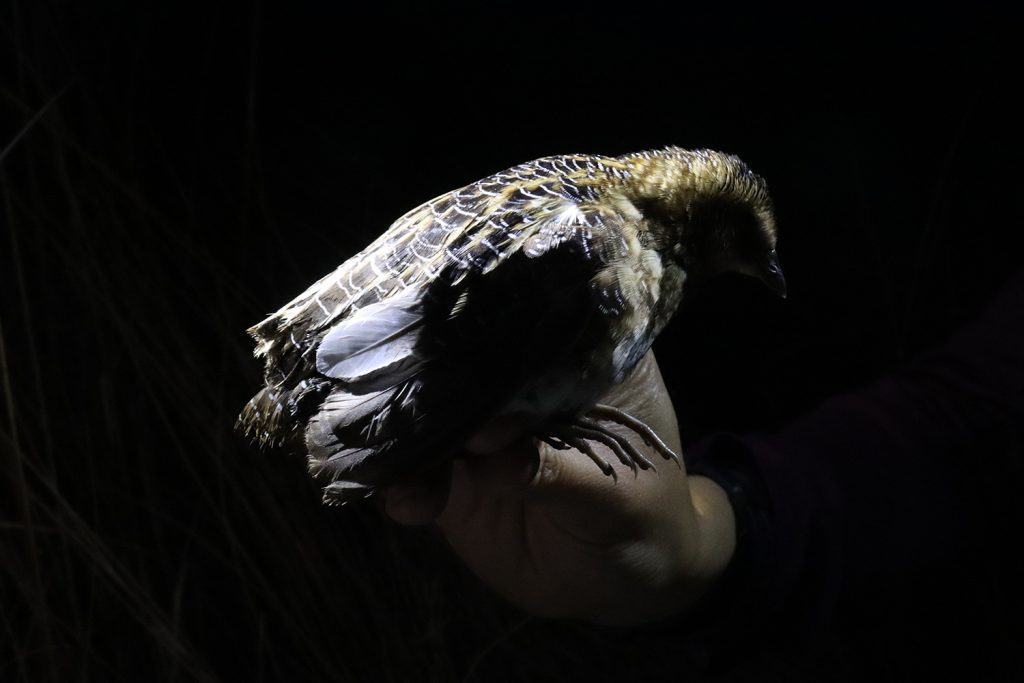
They log its information, and then band it. Researchers who band birds are federally licensed to do so, and the information they collect is submitted to the US Geological Survey. Anyone who spots the bird and identifies its unique combination of bands can learn this bird was banded on a north Florida coast in February 2023. The spotter can then add where they spotted the bird, and any other information. Over time, researchers learn about the movements and activities of different bird species.
What have they learned so far?
The Stoddard lab has learned a few things about black and yellow rails, though Heather admits they’re still at an early stage of their survey work.
So far, they have found more rails at sites that are burned every 2-5 years.
Some of what they’ve found has led to more questions. Says Heather, “One really cool thing about the winter work that we’re doing is we’re finding a lot of birds in pairs or even groups of three or four… it’s going to be really interesting eventually to do some genetic studies to see how those groups are related to each other, whether they’re just kind of congregating in the habitat because it’s good, or whether they’re partnering up early on, or hanging out with their young pretty late in the season.”
Tall Timbers is covering the north Florida coast, with other partners in Project Firebird covering the other Gulf states and other regions of Florida. What Heather and her team learn locally will add to what the group learns as a whole, painting a fuller picture of the two species.
Over the course of years, they may very well have made black and yellow rails much less mysterious. It’s an exciting prospect for an ornithologist. “It’s been really, really amazing to be part of this project and just kind of learning things from from the ground up.”
